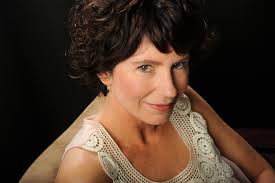I have always viewed
Africa as a place of romantic adventures.
The plains of the Serengeti, the Rift Valley, with untold treasures of
early hominids, the teeming herds of wildebeests, zebras, antelope, all hunted by
lions, leopards, and cheetahs, fascinated me.
The utter darkness and the splendor of the night sky were in places I
could only dream of seeing. No wonder I
devoured every story I could find – among them Out of Africa by Isak Dinesen, West
with the Night by Beryl Markham, and The
Story of an African Farm by Olive Schreiner. Now comes Circling
the Sun by Paula McLain. I reviewed
her novel The Paris Wife in 2011, a
fictional account of Hemingway and his women.
Her new novel weaves a wonderful tale of all the characters I came to
know and love in the African tales – Karen and Bror Blixen, Denis Finch-Hatton,
Lord and Lady Delamere, and of course Beryl Markham.
I discovered the
Beryl Markham memoir -- along with everyone else in 1984 -- when West with the Night appeared, thanks to
a small California Press. This new novel
tells a much more detailed look at the first woman to acquire a class B horse
training license in Africa, and the first woman to fly solo from England to
Nova Scotia. Her prose is riveting – not
suspenseful – but the kind of writing which will not let the reader go, always
begging one more page, one more chapter.
If I remember correctly, I read in a single night, finally closing the
book as dawn approached.

 Here is a sample of
her writing as she describes Beryl’s distress as a child when her mother left
Africa for another man, taking her son with her to England. McLain writes, “What [my father] wanted to
know was if I could love this life as he did.
If I could give my heart to this place, even if she never returned and I
had no mother going forward, perhaps not ever. // How could I begin to
answer? All around us, half-empty
cupboards reminded me of the things that used to be there but weren’t any
longer – four china tea cups with gold plated rims, a card game, amber beads
clicking together on a necklace my mother had loved. Her absence was still so loud and so heavy, I
ached with it, feeling hollow and lost.
I didn’t know how to forget my mother any more than my father knew how
to comfort me. He pulled me – long limbed
and a little dirty, as I always seemed to be – onto his lap, and we sat like that
quietly for a while. From the edge of
the forest, a group of hyraxes echoed shrieks of alarm. One of our four greyhounds cocked a sleek ear
and then settled back into comfortable sleep by the fire. Finally my father sighed. He scooped me under my arms, grazed my drying
tears with a quick kiss, and set me on my own two feet” (14). Beryl Markham not only gave her heart to Africa,
but she gave a part of her soul, along with some blood.
Here is a sample of
her writing as she describes Beryl’s distress as a child when her mother left
Africa for another man, taking her son with her to England. McLain writes, “What [my father] wanted to
know was if I could love this life as he did.
If I could give my heart to this place, even if she never returned and I
had no mother going forward, perhaps not ever. // How could I begin to
answer? All around us, half-empty
cupboards reminded me of the things that used to be there but weren’t any
longer – four china tea cups with gold plated rims, a card game, amber beads
clicking together on a necklace my mother had loved. Her absence was still so loud and so heavy, I
ached with it, feeling hollow and lost.
I didn’t know how to forget my mother any more than my father knew how
to comfort me. He pulled me – long limbed
and a little dirty, as I always seemed to be – onto his lap, and we sat like that
quietly for a while. From the edge of
the forest, a group of hyraxes echoed shrieks of alarm. One of our four greyhounds cocked a sleek ear
and then settled back into comfortable sleep by the fire. Finally my father sighed. He scooped me under my arms, grazed my drying
tears with a quick kiss, and set me on my own two feet” (14). Beryl Markham not only gave her heart to Africa,
but she gave a part of her soul, along with some blood.
Paula McLain’s novel,
Circling the Sun is a fascinating look
at a strong, intelligent, and determined woman, who overcame tremendous obstacles.
Read it now. 5 stars






